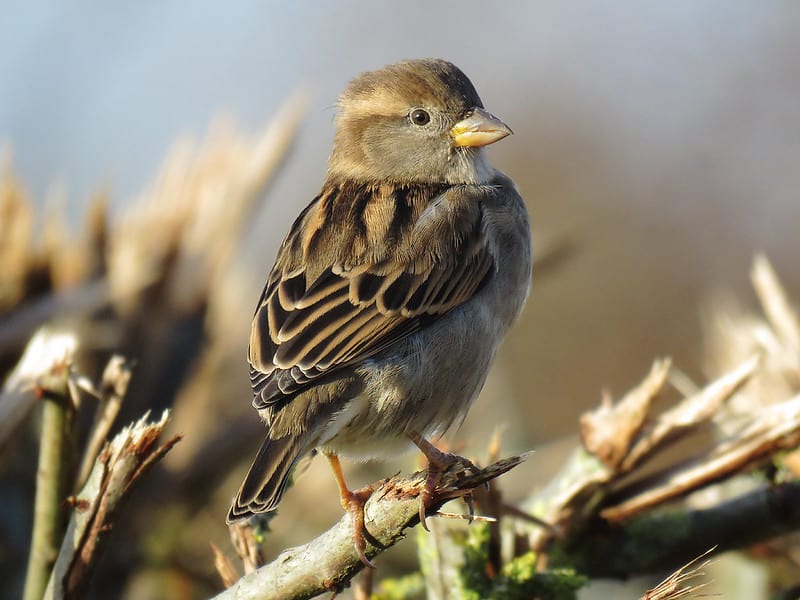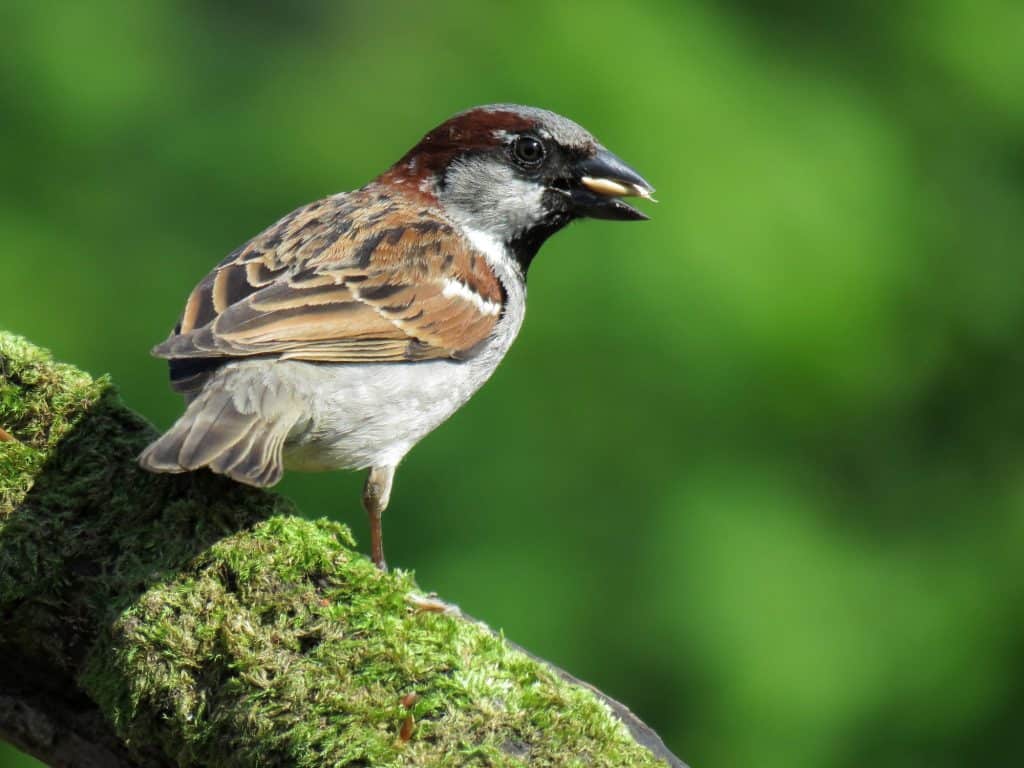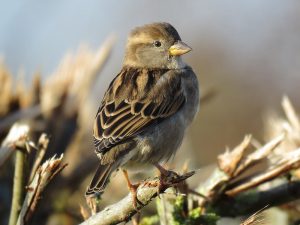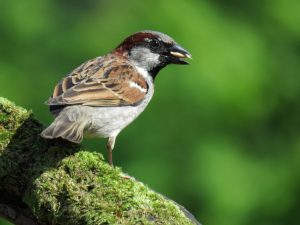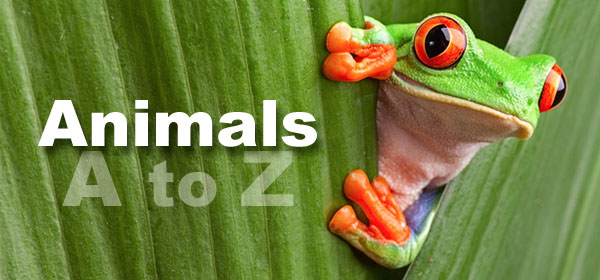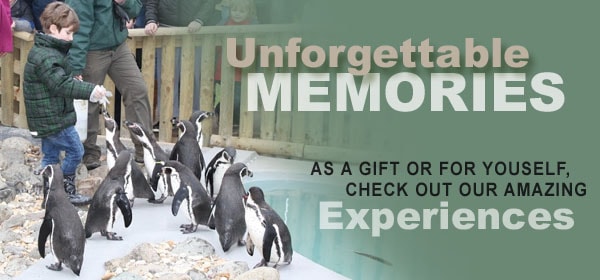Last weekend we celebrated World Sparrow Day! A time to reflect on the decline of our humble sparrows. Why do I say spectacular? I think Sparrows are really underappreciated! Yes, at first some species may look like just another drab looking small brown bird, but when you look at them closely they really are subtly beautiful. Here at the park, you can see two species of Sparrow and further afield you can also glimpse a third species in Kent if you’re lucky.
Sparrows are usually classed as “Old World” or “New World”. There are 43 species of Old World Sparrows around the globe and all have a stout powerful bill designed for eating seeds. Sparrows differ from other similar seed eaters such as finches as they have a vestigial dorsal outer primary feather (isn’t that a mouthful!?) and an extra bone in their tongue (sooo cool!).
Old World Sparrows are indigenous to Europe, Africa and Asia however some species have been introduced to the Americas, Australia and other parts of the world. All are social birds with many species breeding in loose colonies and most spending the non-breeding season in flocks. They are some of the few passerine birds that engage in dust bathing, one of my favourite things to watch birds do. You can find out more about why birds do this in my previous blog here.
New World Sparrows are also primarily seed eaters and are more closely related to Old World Buntings than Old World Sparrows.
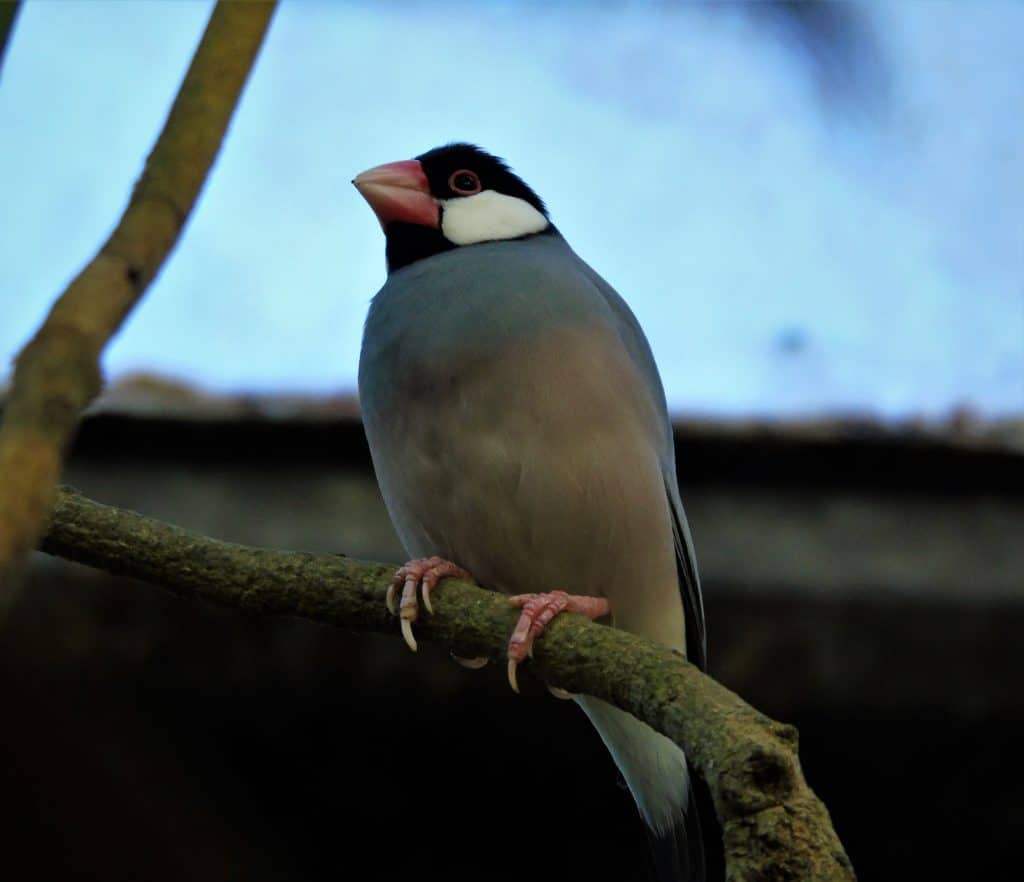
Java Sparrows
The Java Sparrow is actually an estrildid finch and I think this species is delightful!
The white cheek patches contrast beautifully with the black head and bright red bills, surely one of the most spectacular sparrow species. In the wild they originate in Java, Bali and Bawean but there are also introduced populations in Hawaii and Sri Lanka. At Wingham Wildlife Park, you can spot them in our Tropical House if you’re lucky! They mainly feed on seeds and grains and make full use of the nest boxes around their enclosure, but in the wild they will construct their nests in tree hollows or on the outside of buildings. Females can lay up to 8 eggs which hatch after just 12-15 days! Sadly a species that is classified as Endangered on the IUCN red list with collection for the pet trade being one of their biggest threats in the wild.
Female & Male House Sparrows. Photo Credit: Nick Smith.
House Sparrows
House Sparrows are the inspiration behind World Sparrow Day. Our native House Sparrow was once an extremely common bird but sadly they have been seeing some serious declines over the last several decades. Several different factors seem to have caused this, all of which affect many of our farmland species here in the UK. These include agricultural change, loss of nest sites and reduced food availability. The normal nest sites for this species are holes in buildings but if these are not available, they will also build an untidy detached nest of woven grasses. You can see House Sparrow nests (and other species’ nests) around the Park in my previous blog here.
Adult males can be distinguished by the black bib which is wide and extends down onto the chest. I love the different chestnut colouration on the back with streaks of black and white wing feathers. The females and juveniles are typically sandy brown in colour with brown and grey streaks on the back and wings.
Thankfully House Sparrows seem to do very well at the Park, look out for them around our animal enclosures, if you’re lucky you might even spot them nesting at the moment! I love watching them chase after feathers when it’s time to line their nest.

Tree Sparrows
Tree Sparrows are fairly easy to separate from House Sparrows as both male and females look quite similar. They have a characteristic reddish-brown crown and white patches on the sides of their head, and a distinctive black spot on their cheeks. Sadly, a species that is also declining and with a much reduced range in Kent now. You can try and catch a glimpse of them nearby though, Dungeness is one of my favourite places to try and spot one.
Tree Sparrows have undergone the largest population crash of all our once common bird species, with a population decline of 95% between 1970 and 1998. This decline parallels the decline of other farmland birds which alter their diet in the breeding season from eating seeds to foraging for insects to feed their young. General specialisation of farming and more intensive use of herbicides and pesticides are thought to be two of the main causes for their decline.
How can you help?
If you have sparrows where you live there are a number of things you can do to try and help them out.
They are hole nesters, usually in buildings or old trees and hedges. Preserving nesting sites is vital to their conservation, so if you have natural nesting sites in your buildings, leaving them open for sparrows is excellent. If you’re thinking of clearing your garden, perhaps leave a patch of long grass or bushy areas for the sparrows.
If you’re looking to plant a wildlife garden, a hedge or bush is a great addition! Hawthorn, blackthorn, alder and wild privet are all fantastic additions to any garden. Sparrows will also use artificial nest boxes but prefer boxes with a 2.8cm diameter entrance hole with a depth of about 20cm.
Feeding sparrows is also a great way to give them a helping hand in the winter – corn, millet and sunflower seeds are great choices. Fresh water is also appreciated by all birds, but make sure that any water baths and bird feeders you provide are cleaned regularly to reduce the spread of disease.
I hope you enjoyed reading about these often-overlooked bird species and that the next time you see one you spare a thought for these charming birds and their decreasing numbers. Thanks again to my friend Nick Smith from Sandwich Bay Bird Observatory for the use of his wonderful photos!
